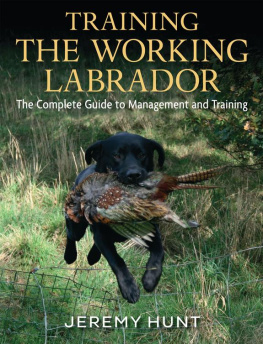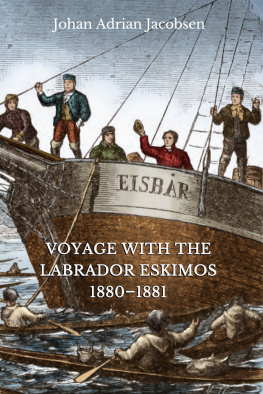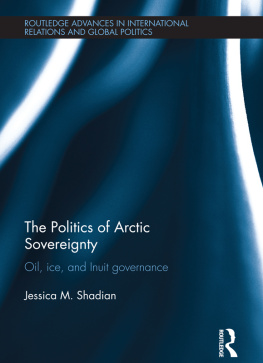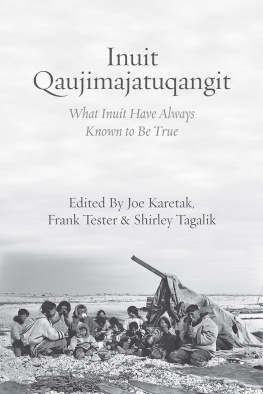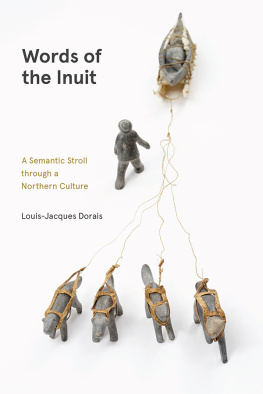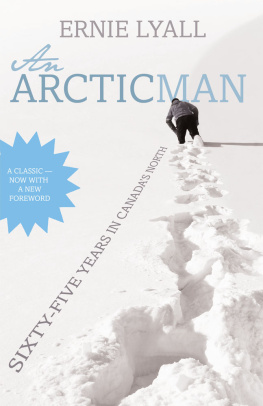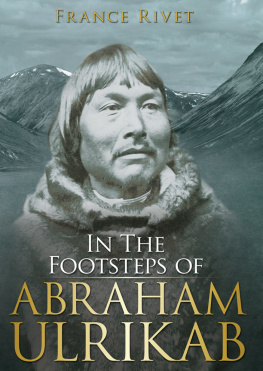Edited by David C. Natcher, Lawrence Felt, and Andrea Procter
CHAPTER 5
Tracing Social Change Among the Labrador Inuit: What Does the Nutrition Literature Tell Us?
Maura Hanrahan
Inuit believe that you are literally the food you eat. One way to better know Inuit, then, is to understand what they eat, how their eating habits and patterns changed, and, crucially, why. An exploration of the relevant nutrition literature can enhance our understanding of the Labrador Inuit and their history.
This chapter relates the nutrition-related literature to three phases of social change as experienced by the Labrador Inuit: disruption, adaptation, and, finally, transformation (during which the epidemiologic transition occurs). Social change and food practices are intertwined, and changes in food practices are associated with health effects. As we trace the development of each phase of social changedisruption, adaptation, and transformationthrough the food-related literature, we learn how social change affects food acquisition, consumption, and meaning in Labrador Inuit society. At the same time, nutrition studies can help us locate where Inuit communities are in their journey through these phases; they help demonstrate, for example, that since the early part of the twentieth century the Labrador Inuit have been in the transformation phase and are undergoing the epidemiologic transition, a phase in human development characterized by a sudden increase in population growth rates brought about by improved health care, followed by a re-levelling of population growth from subsequent declines in procreation rates.
This chapter grows out of a critical review of the Labrador Inuitspecific and related nutrition literature. The review was carried out as part of a larger review of all nutrition-related literature pertaining to Newfoundland and Labrador from 1630 to 2000, culminating in the 2001 publication of the annotated bibliography, A Veritable Scoff: Sources on Foodways and Nutrition in Newfoundland and Labrador. the paper is also informed by participant observation.
Indigenous People and Social Change
Perhaps no population in North America has experienced such rapid social change as the indigenous peoples of Canadas North. The indigenous situation is markedly different from those of other populations in Canadian society that are undergoing social change, such as immigrants who often voluntarily came to Canada.
According to Peter Bjerregaard and T. Kue Young,
The second phase is, in the words of Bjerregaard and Young, a period of relative stability and adaptation, which I shall refer to as adaptation. It is most clearly delineated in Greenland, which the Danish government, through the Royal Greenland Trade Department, kept isolated for decades. Broadly, this phase lasted until the middle of the twentieth century, varying widely from one Inuit region to another. During this period, the Labrador Inuit continued to rely mainly on traditional foods, as we shall see, but were also becoming familiar with introduced foods, such as the root vegetables grown by the Moravian missionaries on the north coast. The Hudsons Bay Company and other traders became established at North West River, Cartwright, and other Labrador communities, with the result that Inuit and Inuit-Mtis traded for or purchased imported foodstuffs like sugar and coffee. However, the mass influx of commercial food products had yet to occur.
The third phase is a time of more complex and intense transformation with the outcome of national and global integration, according to Bjerregaard and Young and M.H. Wahdan. I shall call this phase transformation. Bjerregaard and Young (both research physicians) claim that, in the last half-century or so, all Inuit communities...have completed the transformation from relatively isolated self-reliant communities based on hunting and fishing that existed at the time of contact. In fact, Inuit are integrated in some ways, but not all, since, as we shall see, some of their food practices are remarkably persistent, and in some jurisdictions there are factors that facilitate cultural persistence (e.g., the land claims process in Canada). Further, the epidemiologic transition and the transformation phase are more complex than Bjerregaard and Youngs description indicates.
The epidemiologic transition may never be complete, because it is not necessarily unidirectional; in the words of Wahdan, the epidemiologic transition is a continuous transformative process, with some (infectious) diseases disappearing and others appearing or re-emerging.
The epidemiologic transition is a process indigenous people undergo during the transformation phase. As populations undergo the epidemiologic transition, they generally become healthier and their life expectancy increases; infant mortality falls and more people survive to adulthood. There is a fundamental change in the main determinants of health and a shift in the primary causes of death from infectious to non-infectious diseases. Populations experience higher rates of chronic degenerative diseases, such as cancer, cardiovascular diseases, and type 2 diabetes. There is also a rise in non-fatal but disabling conditions, such as osteoarthritis.
Before Disruption: Labrador Inuit in the Pre-contact Period
Labrador is a large northern territory of boreal forest and sub-arctic tundra that constitutes the mainland portion of the eastern Canadian province of Newfoundland and Labrador. There are currently (as of 2011) about 7000 Labrador Inuit, nearly half of whom live on the coast abutting the Labrador Sea, part of the north Atlantic Ocean. The Labrador Inuit are the direct descendants of the Thule who migrated across northern Canada from Alaska about 1200 CE. The Labrador Inuit share many customs and cultural practices with Inuit in the other three Inuit regions of Canada (as defined by the Inuit Tapiriit Kanatami [ITK], the national organization for Inuit): Nunavik, Quebec; Nunavut, Canadas third territory; and Inuvialuit, northwestern Canada. There are linguistic similarities among all these groups, although Labrador Inuktitut is an endangered language and spoken in only a few of the communities on Labradors north coast, most notably Nain and Hopedale. In addition to their links within Canada, the Labrador Inuit are also connected to Inuit worldwide through their membership in the Inuit Circumpolar Conference (ICC), the international Inuit body, which draws from Russia (especially Chukotka), Greenland, and the United States as well as Canada. The Labrador Mtis remain outside the ICC and are not part of the land claim that led to the formation of Nunatsiavut.
Like most indigenous peoples who have an integral relationship with the land and sea, Labrador Inuit practise a seasonal round of economic activities that provide the means to stay alive but also are imbued with cultural and social meaning. Historically, large gatherings of up to 200 people took place in summer when Inuit fished salmon and caught Arctic char using weirs or spears. Food, mainly fish that was dry-cured, was relatively abundant during the short summer season. In late summer, Inuit moved inland to hunt caribou, drying and storing much of the meat for the winter, when food scarcities were not uncommon. By early fall, Inuit were living in small family groups; they dispersed to better take advantage of sparse resources. In late fall, Inuit hunted migrating harp seals, and in winter they caught and ate ringed seal, walrus, and seabirds, such as murre. Labrador Inuit lived in sod houses in winter and skin tents in summer, building igloos (snow houses) when they travelled to access food resources during the snowy months.


